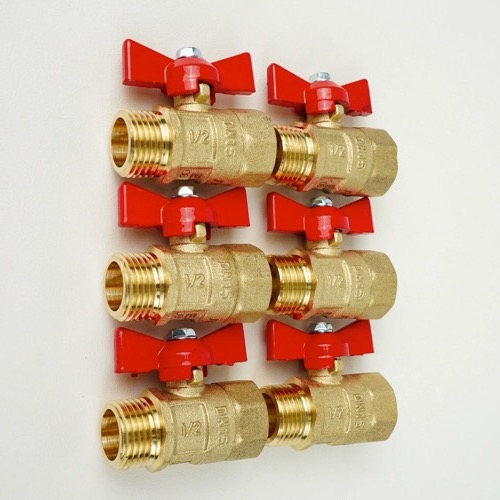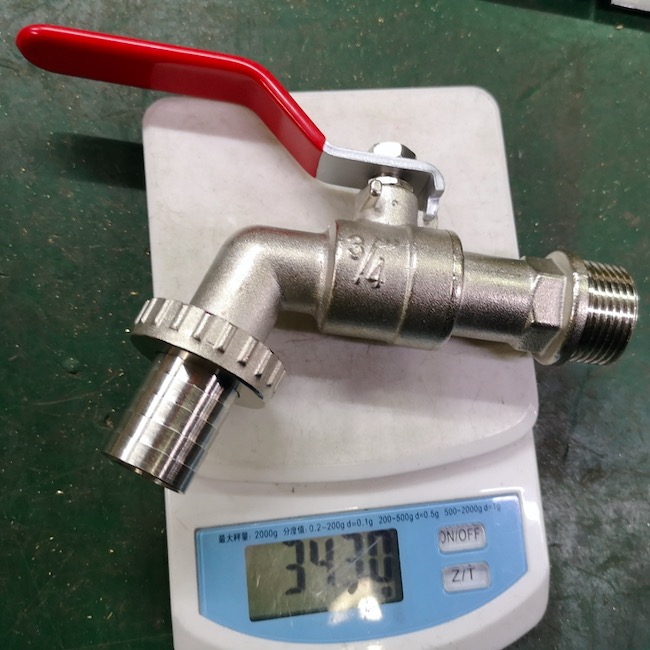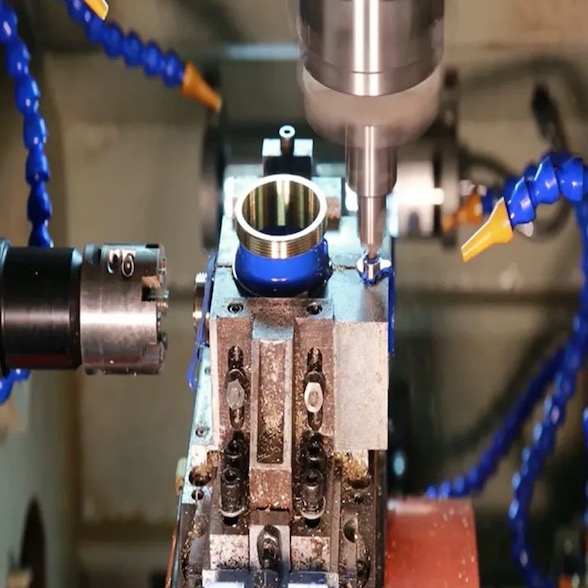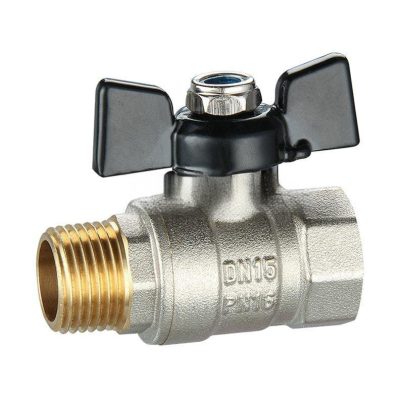Choosing the right ball valve material is crucial for durability and performance. Many people confuse bronze and brass ball valves, but they have distinct differences that impact their use.
Bronze ball valves and brass ball valves differ in composition, strength, corrosion resistance, and applications. Understanding these differences helps in selecting the right valve for plumbing, industrial, and marine uses.
Let’s explore the differences between bronze and brass ball valves to help you make an informed decision.
What is a Bronze Ball Valve?

Bronze Ball Valve 2"
Bronze ball valves are widely used in plumbing and marine applications. But what makes them unique?
A bronze ball valve is a durable valve made primarily of copper and tin alloys. It offers high corrosion resistance1, making it ideal for water, steam, and marine environments.
Benefits of Bronze Ball Valves:
- High corrosion resistance, especially in saltwater environments.
- Stronger and more durable than brass valves.
- Ideal for high-temperature and high-pressure applications2.
- Preferred for industrial and marine applications.
Bronze ball valves are commonly used in plumbing systems that require longevity and resistance to harsh conditions.
What is a Brass Ball Valve?
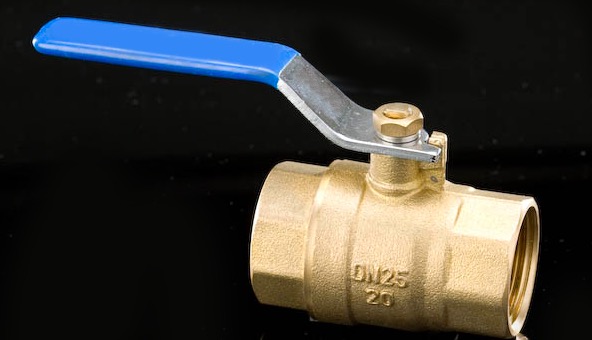
Brass Ball Valve Blue Level Handle
Brass ball valves are a common choice for residential and commercial plumbing, but why?
A brass ball valve is made from a copper-zinc alloy, providing a cost-effective and versatile option for controlling fluid flow in plumbing and industrial applications.
Benefits of Brass Ball Valves:
- More affordable than bronze valves.
- Suitable for residential and commercial plumbing.
- Easier to machine and manufacture.
- Offers good corrosion resistance but not as strong as bronze.
Brass ball valves are widely used for water, gas, and oil applications where high corrosion resistance is not a primary concern.
What is the Difference Between Bronze and Brass?

Bronze vs Brass Ball Valve
People often confuse bronze and brass, but they have distinct properties. Understanding their differences helps in choosing the right material.
Bronze is an alloy of copper and tin, whereas brass is an alloy of copper and zinc. Bronze is harder, more durable, and more corrosion-resistant than brass.
Key Differences:
| Property | Bronze | Brass |
|---|---|---|
| Composition | Copper and tin | Copper and zinc |
| Strength | Stronger, more durable | Softer, easier to machine |
| Corrosion Resistance | Higher, especially in marine environments | Moderate, susceptible to dezincification |
| Cost | More expensive | More affordable |
| Applications | Marine, industrial, high-pressure systems | Residential plumbing, gas, and oil systems |
These differences impact the performance of ball valves in different applications.
What is the Difference Between Brass and Bronze Ball Valves?
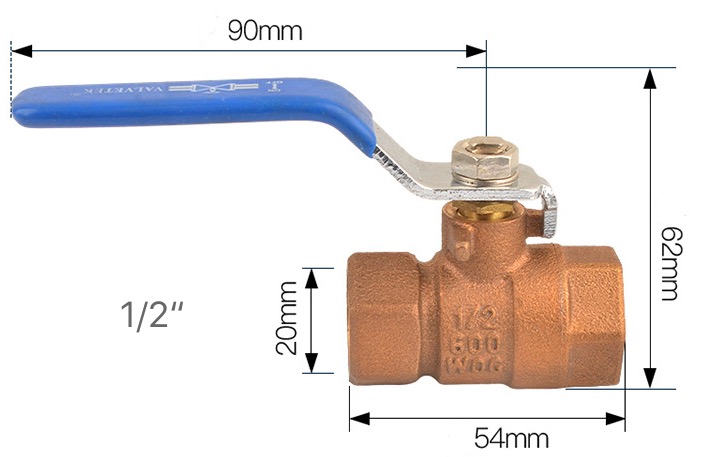
Brass vs Bronze Ball Valves
Both bronze and brass ball valves have their advantages, but how do they compare?
Bronze ball valves offer superior strength and corrosion resistance, making them ideal for industrial and marine environments. Brass ball valves are cost-effective and suitable for general plumbing applications.
Comparison of Ball Valves:
| Feature | Bronze Ball Valve | Brass Ball Valve |
|---|---|---|
| Corrosion Resistance | High, especially in saltwater | Moderate, prone to dezincification |
| Durability | More durable | Less durable |
| Cost | Higher | More affordable |
| Applications | Marine, industrial, high-pressure | Residential, commercial, general plumbing |
Bronze ball valves are the better choice for harsh environments, while brass ball valves work well for standard plumbing needs.
Which is Better, Brass or Bronze Gate Valves?
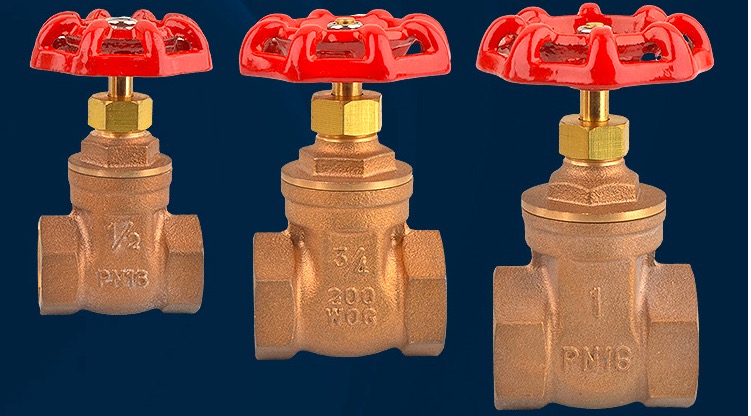
Brass vs Bronze Gate Valves
When it comes to gate valves, both materials have their strengths and weaknesses. Which one should you choose?
Bronze gate valves are superior for durability and corrosion resistance, making them ideal for demanding applications. Brass gate valves are more budget-friendly but less durable.
Choosing the Right Gate Valve:
- Use bronze gate valves for high-pressure and corrosive environments.
- Use brass gate valves for cost-effective, general-purpose applications.
- Consider operating conditions such as temperature, pressure, and exposure to corrosive elements.
For long-term reliability in harsh conditions, bronze gate valves are the better choice, while brass gate valves are sufficient for standard plumbing systems.
Bronze and brass ball valves have key differences in composition, durability, and corrosion resistance. Selecting the right material depends on your specific application needs, budget, and environmental factors.
Market Analysis for Bronze Valve
Overview of the Global market
In 2023, the global bronze valve market will reach approximately US$4.5 billion, a year-on-year increase of 5%.
The North American and European markets account for the majority of the global market, accounting for 35% and 30% respectively.
The Asian market follows closely behind, accounting for 25%, while other regions such as South America, the Middle East and Africa account for a total of 10%.
Overview of the Chinese market
In 2023, the Chinese bronze valve market will be approximately US$1.125 billion, a year-on-year increase of 6.5%.
The growth rate of the Chinese market is slightly higher than the global average, mainly due to the continuous investment in domestic infrastructure construction and the steady development of the manufacturing industry. The Chinese government's support for environmental protection and energy conservation and emission reduction policies has also driven the growth in demand for high-efficiency, low-energy bronze valves.
Brass vs Bronze Gate Valves Brass Gate Valve
| United States | Market Size (USD billions) | Growth Rate | Key Drivers |
|---|---|---|---|
| 3.2 | 4.5% CAGR | Infrastructure development, HVAC systems expansion |
| Germany | Market Size (USD billions) | Growth Rate | Key Drivers |
|---|---|---|---|
| 1.8 | 3.8% CAGR | Industrial automation, Robust manufacturing sector |
| China | Market Size (USD billions) | Growth Rate | Key Drivers |
|---|---|---|---|
| 5.5 | 6.2% CAGR | Rapid urbanization, Construction boom |
| India | Market Size (USD billions) | Growth Rate | Key Drivers |
|---|---|---|---|
| 2.0 | 7.0% CAGR | Infrastructure projects, Increasing demand for water and gas distribution |
| Japan | Market Size (USD billions) | Growth Rate | Key Drivers |
|---|---|---|---|
| 1.3 | 3.5% CAGR | Technological advancements, High demand in electronics and automotive sector |
Comparative Overview
| Country | Highest Market Size | Highest Growth Rate |
|---|---|---|
| China | 5.5 USD billions | 6.2% CAGR |
| India | 2.0 USD billions | 7.0% CAGR |
Brass and bronze valve markets are influenced by factors such as infrastructure development, industrial growth, and technological advancements. The highest market size is observed in China, driven by rapid urbanization, while India shows the highest growth rate due to significant infrastructure projects and increasing demand.
For more about the Bronze Ball Valve and Brass Ball Valve, welcome to CONTACT VPEXCO




